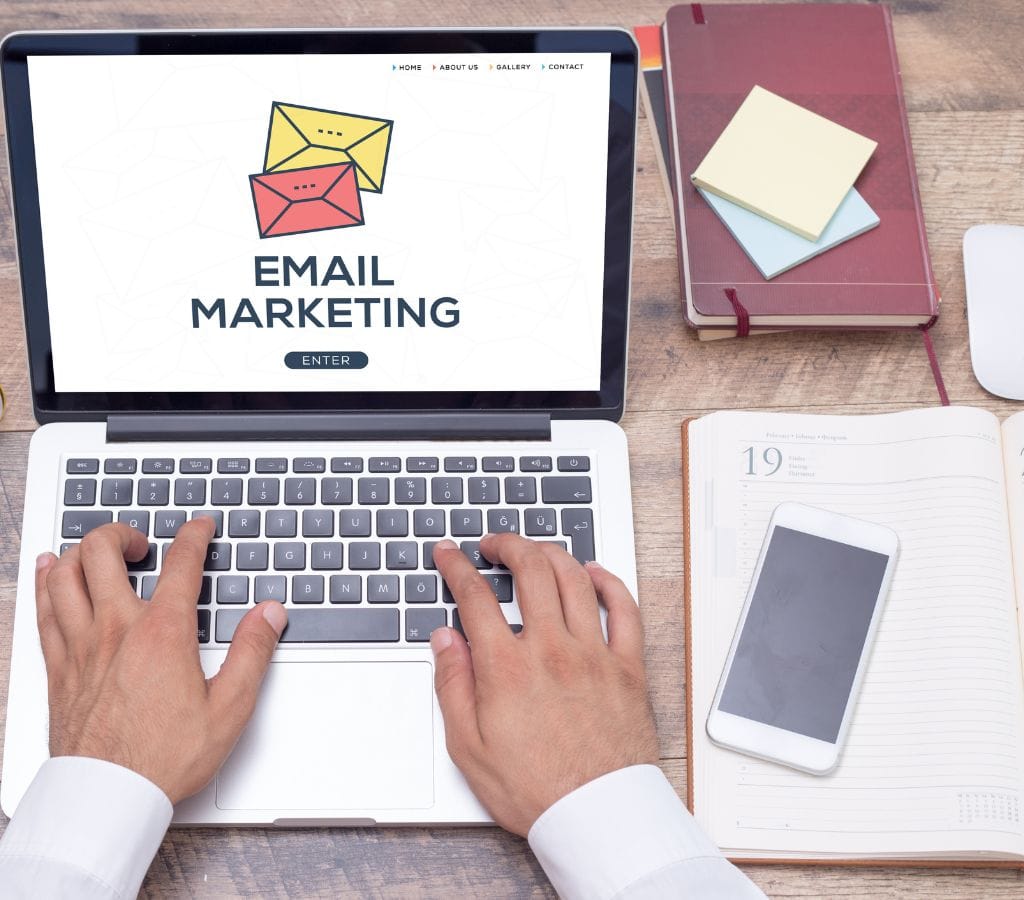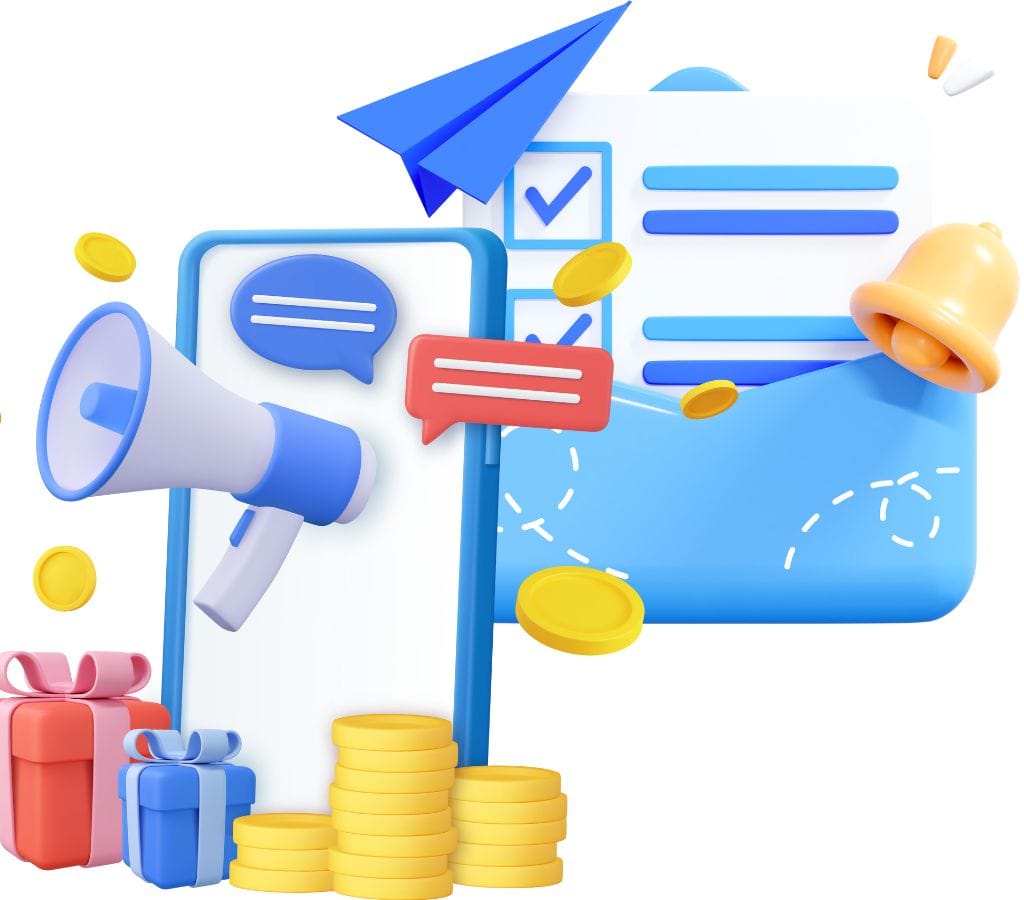A key component of email marketing is the email list, a curated collection of email addresses. Understanding email list is important for effective marketing, so we'll explore what an email list is, the benefits of making an email list, and tips for managing an email list to drive engagement and achieve marketing goals.
What is an Email List, and What Are Its Benefits?
Email lists are collections of email addresses that businesses collect and keep to send targeted email campaigns. These email addresses are usually gathered in various ways, such as through events, lead-generation campaigns, website sign-ups, or online purchases.
Benefits of Making an Email List
- Marketing Campaigns: Marketing campaigns are the main reason email lists are used. Targeted and relevant content to subscribers can increase sales and event attendance.
- Newsletters and Updates: Email lists are a good way to keep subscribers updated with regular newsletters and updates. Share industry news, business updates, blog posts, or exclusive content with subscribers to keep them engaged.
- Maintaining Customers and Interactions: Email lists are a great way to keep customers and keep them coming back. By getting in touch regularly, businesses can give subscribers value, address their demands, and strengthen brand-consumer relationships.
- Lead Generation: Email lists can be used to collect leads and make a list of people who might become buyers. Offering free content or other incentives in exchange for email addresses helps businesses grow their email list and stay in touch with interested customers.
- Market Research and Surveys: You can use email lists for market research and get feedback from subscribers. Businesses can also get useful information, likes, and opinions from customers by sending out polls or surveys. This helps them make smart choices and improve their products.

Why Email Lists are Important for Businesses
- Improves Communication with Customers: Email lists make it easier to talk to customers because you can send personalized messages straight to their inboxes instead of using other marketing platforms.
- Promoting Product or Service: Promoting products and services through email lists can improve sales and conversions. Customized promotions are possible when people are divided into groups based on demographics, hobbies, or past buying habits.
- Keep Customers Loyal: Email lists help companies build and maintain strong customer relationships, which builds trust and credibility. Regular email communication with customers builds trust and gets them to buy from you again.
- Drives Website Traffic and Engagement: Email lists send subscribers to specific landing pages, blog posts, or product pages, which attracts more visitors and encourages them to interact with a website.
- Offers a High Return on Investment (ROI): Email marketing, made easier by email lists, has a high ROI, which lets businesses make choices based on data to improve their marketing efforts.

How to Make an Effective Email List?
A key part of successful email marketing is building a good email list. It involves gaining engagement with relevant subscribers who have freely given you their email addresses and agreed to receive your emails. Here are some important tips that will help you build a good email list:
Collecting Email Addresses
- Website Opt-in Forms: Make sure your website has opt-in forms that people can use to join your email list. Offer free stuff, discounts, or special content only available to people who sign up as an incentive.
- Pop-up Forms: Use pop-up forms on your website to attract visitors' attention and encourage them to sign up. Use interesting text and images to attract subscribers to your email list.
- Social Media Promotions: Send social media followers to your website or landing pages to join your email list. Hold contests or give away gifts to encourage people to join.
- Trade Shows and Events: At events and trade shows, have a sign-up sheet where people can give you their email addresses. You can also use a tablet or phone to get their contacts. Make sure that people who come agree to be added to your email list.
- Lead Magnets and Content Upgrades: You can offer useful incentives such as e-books, whitepapers, or exclusive guides to get people to join your email list. You could also add extra content to blog posts to get people to subscribe for similar content.
Ensuring User Consent
- Double Opt-in: Use a process called "double opt-in," in which subscribers confirm their subscription by clicking a link to their email. This guarantees subscribers want to join your email list and reduces spam issues.
- Clear Privacy Policy: Make sure your customers understand your privacy policy and know their data will be protected. Being honest helps people trust you, which leads to more sign-ups.
- Unsubscribe Option: Make sure every email has a clear and simple way to stop. Respecting subscribers' choices and making it easy to unsubscribe helps keep an email list healthy and active.
Separating Your Email List
- Demographics: Divide your email list into groups based on things such as age, gender, area, or job title. This will allow you to send more personalized and focused messages to specific groups of people.
- Behavioral Patterns: Divide subscribers into categories depending on their past behavior, such as what they bought, how they used your website, or how active they were in your emails. This lets you send them offers and information relevant to their interests and preferences.
- Email Preferences: Give subscribers ways to choose how often and what kind of emails they want to receive. This will ensure that subscribers only get relevant emails, keeping them interested and less likely to unsubscribe.
Keeping Your Email List Organized
- Regular List Cleaning: Remove subscribers who aren't using your email list or aren't interested in it regularly. This keeps your list healthy and ensures that your emails reach people who are interested in them.
- Bounce Management: Monitor and address both hard and soft bounces (permanent and temporary delivery fails) in your emails. Remove email names that return to the sender to keep the list clean.
- Interaction Tracking: Monitor email interaction metrics like open rates and click-through rates to identify subscribers who are not responding to your emails. Then, you can run re-engagement efforts or remove them from your list.

How to Manage Your Email List?
Once you've made an email list, it's important to keep it under control so it keeps growing and getting people to join. In order to keep a healthy subscriber base and get the most out of your email list, you need to manage it with various jobs and strategies. So, here are some important steps you can take to manage your email list well:
How to Pick the Best Software for Email Marketing?
- Choosing Features: Research and compare different email marketing software choices to find the one that best fits your business needs. Consider features such as managing lists, automating tasks, dividing subscribers into groups, and data.
- List Segmentation: Make sure that the email marketing software you choose makes it easy to divide your email list into groups based on different factors. As a result, you'll be able to send personalized emails to specific groups of your viewers.
- Integration Choices: Consider how well the email marketing software can work with other platforms and tools you already use, such as e-commerce or CRM systems. Smooth interaction can make managing your email lists easier.
Checking Email Lists Performance
- Track Key Metrics: It is important to monitor read rates, click-through rates, bounce rates, and unsubscribe rates. These metrics inform you how well your email efforts are performing and help you find ways to improve them.
- A/B Testing: To find out what works best for your subscribers, you can do A/B tests on different parts of your emails, such as subject lines, content, or calls to action (CTAs). Then, use the data to improve your next campaigns and get more people to participate.
- Segment Performance Analysis: Look at how well different parts of your email list are doing. Find the groups that are actively participating and responding, as well as those that might need strategies for re-engagement or more segmentation.
Regularly Updating Your Email List
- Remove Inactive Subscribers: Check your email list every so often and remove subscribers who haven't done anything in a certain amount of time. This keeps your list clean and ensures that your emails reach people who are actively using as well as interested in them.
- Re-Engagement Campaigns: If you have subscribers who haven't been active in a while, you might want to try re-engagement campaigns to keep them interested. Offer discounts, special content, or other rewards to get them to open your emails again.
- List Growth Tactics: Use tactics to grow your email list naturally over time. For example, improve website opt-in forms, run targeted lead-generation efforts, or use social media to get more people to sign up.
Data Protection and Compliance
- Compliance with GDPR and CAN-SPAM: Learn about data security laws such as the General Data Security Regulation (GDPR) and the Can-Spam Act. Ensure that your email marketing practices don't break these rules and that you have the right ways for people to give their permission.
- Data Security Measures: Put in place strong security measures to protect your subscribers' personal information. For example, secure servers, encryption, and regular backups to protect their data.

How to Use Email Lists Effectively?
In order to get the most out of your email list and get the best results, you should use this powerful marketing tool correctly. Using these strategies, you can reach your marketing goals, get more people to connect with you, and give your subscribers value. So, here are some tips on how to use email lists effectively:
Making Email Content More Personal
- Segmented Messaging: Use your email marketing software's division features to send personalized emails to groups of people. By tailoring your content to their interests, preferences, and behaviors, you can make your content more relevant and engaging.
- Changeable Content: To make the experience even more personal, use changeable content in your emails. Show different content blocks based on information about the subscriber, like where they live or what they've bought.
- Personalized Subject Lines: Write subject lines that are interesting and relevant to each user. Include their name or specific actions to get their attention and boost open rates.
Setting the Right Email Frequency
- Consistency: Send emails regularly to keep your brand in people's minds. Set a regular posting schedule that works for your audience and stick to it. It could be once a week, twice a week, or once a month.
- Avoid Sending Too Many Emails: Be careful not to send too many emails to your subscribers. To avoid unsubscribing or losing their attention, find the right mix between staying in touch and giving them space in their inbox.
- Test and Monitor: Monitor your email engagement data and perform tests to determine how often your audience responds best. Also, monitor the read rates, click-through rates, and unsubscribe rates to determine how often you should send emails.
Following Email Marketing Rules
- Permission-based Marketing: Make sure that everyone on your email list has given you clear permission to send them emails from your business. When you buy or use email groups, don't use ones that don't follow permission-based marketing rules.
- Cancel Mechanism: Every email you send should have a clear and easy-to-find link that lets people cancel. Make it easy for people who have signed up to stop receiving your emails.
- Privacy Policy and Data Protection: Make sure your privacy policy is clear and explains how you will handle and protect user data. Following data security rules, like GDPR and the CAN-SPAM Act, will help you gain the trust and credibility of your audience.
Testing and Review the Results
- A/B Testing: Always run A/B tests on different parts of your emails, such as the subject lines, calls to action, style, and images. Look at the results to improve your email campaign over time.
- Metrics Analysis: Review and consider important measures like open rates, click-through rates, and conversion rates regularly. Find out what your audience likes and use that information to make decisions that will improve your email marketing plan.
- Email Performance Tracking: Keep an eye on how well your email efforts are doing over time. Keep an eye on trends, figure out what works, and learn from what doesn't work to improve your method as well as get better results.
In conclusion, you can use your email list to send your subscribers personalized and relevant content, get them involved, and get them to do what you want. Keep reviewing your email marketing strategy and making changes based on statistics and subscriber feedback. Good management and following best practices can help your email list become a useful tool for reaching your business goals.

